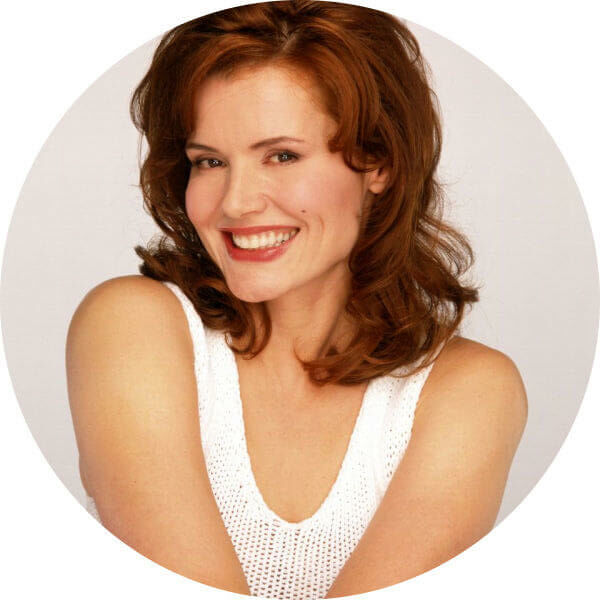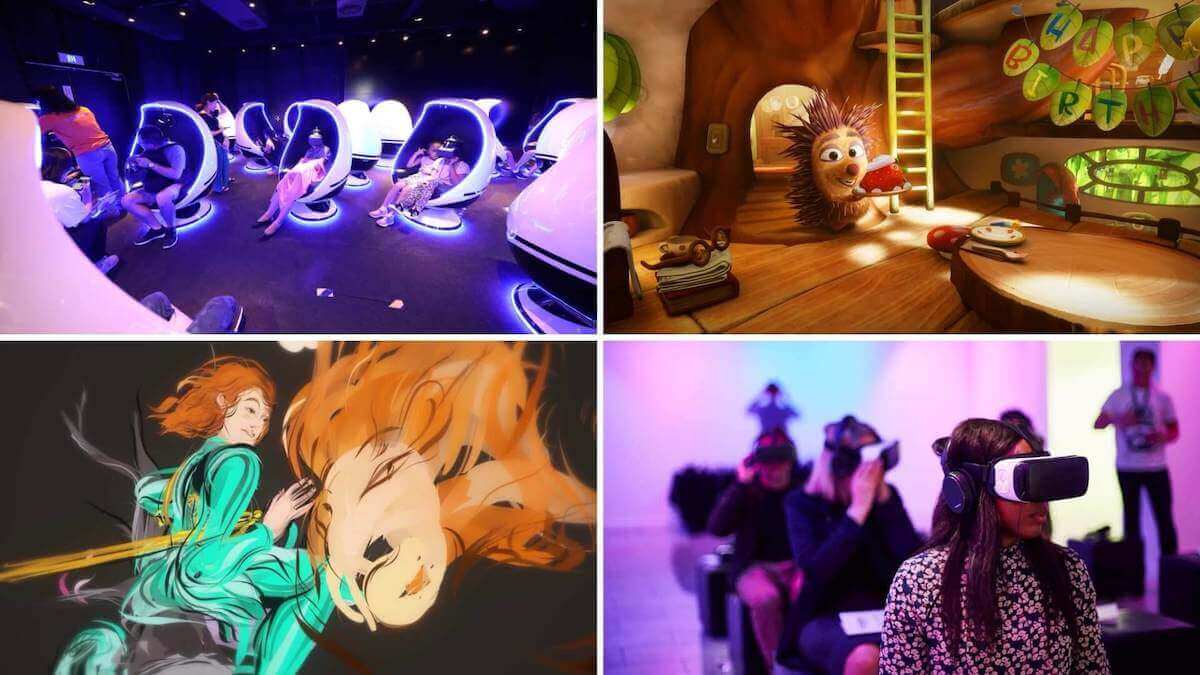The goal of cinematic storytelling has always been empathy; to move the viewer as close as possible to the story. First, we used moving pictures, then color and sound, 3D, IMAX, CGI, and animation. Now filmmakers are looking towards virtual reality as a way to further immerse an audience. With this technology, the viewer moves beyond the screen to become a participant in the story itself. How do filmmakers use virtual reality in narrative structure? What are the potentials of this next frontier, and how can you apply it today in your own projects? How can you make VR movies? Let’s dive in, and experience for ourselves. . . A whole new world awaits.
What is VR?
Let's talk about VR cinema
We’ll begin with a basic understanding of the medium. We’ve all seen the Oculus headset transport its user to another world. We’ve seen its prevalence in gaming, especially, but how do we as filmmakers use VR? How can we interpret and understand virtual reality for our story-telling purposes?
VIRTUAL REALITY Filmmaking
What is virtual reality film?
Virtual reality (VR) is a three-dimensional, simulated environment that is generated by computer technology. VR focuses on an experiential interface rather than observational. The immersive technology allows users to interact with objects, physically look around within the VR environment, and perform specific actions. Most VR operates with the use of a headset that users look into. More complex VR, however, utilizes gear like handheld controllers, special gloves, headphones, or even omni-directional treadmills.
But how might a storyteller define it?
A filmmaker could describe VR as such: The ability to not only fully immerse a viewer in a story, but even further, into the characters themselves.
Sounds pretty cool, right? But how do we make this happen?
Utilizing new technology like VR or not, it is still paramount for filmmakers to always consider the same storytelling tricks like story beats and different narrative structures. And the makers of VR know this.
Let’s take a closer look at one of the premiere developers in the industry, Oculus. Oculus works not only in pioneering the technology, but with integrating story in conjunction.
Virtual Reality Filmmaking
Virtual reality filmmaking — Oculus
We all know Oculus as the premiere technology in VR, but did you know the company so believes in the power of its technology for cinematic storytelling, it’s dedicated an entire department to it?
Meet: Oculus Story Studio, and some of the genius innovators behind the very first VR films.
The Future of VR Movies • Oculus Story Studio
We see here, the discovered power of VR (especially VR movies) is its immersive nature. It’s a medium driven by participation. A sort of access that’s fundamentally restricted in a traditional viewing experience. It’s transportive and completely merges the observer and the art.
The opportunities provided by virtual reality filmmaking will open stories up further than we ever could have imagined. The access here is remarkable and demands our attention as storytellers of today for VR movies of tomorrow.

The possibilities of VR are much more vast than we initially thought they would be. Because you matter in that story. The way you experience the story matters.
- Saschka Unseld, Pixar Creative Director & Founder of Oculus Story Studio
VR Movies
The first VR short films
One of the very first VR movies was Oculus’ premiere: Henry (2015). Henry is the story of an animated Hedgehog — the first character created exclusively for VR — as a study of the medium for connection.
This example of virtual reality filmmaking is key to understanding the emotive abilities of virtual reality in movies. This is the first character that lives and breathes with you, beside you, the audience, in his narrative experience.
A breakthrough in VR film • Oculus Story Studio: Henry
The ability of VR movies to grant a viewer first-hand access to character, to a character’s direct experience is what sets it apart from traditional film. The character can look right at you.
It’s not pre-recorded — it’s alive in this reality. If film is a tool for empathy, virtual reality filmmaking might be its closest iteration.
Even elite Hollywood players like Oscar-winning actress/producer Geena Davis, are taking note and becoming involved in VR movies. She stars in Oculus’ Dear Angelica, which premiered at Sundance in 2017.
The Future of VR Movies • Oculus Story Studio: Dear Angelica
This short film permits the viewer access to the minds of each character, while also moving its audience through the illustrations as if these drawings are the location. This innovative manipulation of VR filmmaking allows the viewer to exist simultaneously as the painting itself. It’s a groundbreaking work, essentially allowing two points of entry for the audience. A must-watch for any filmmaker exploring opportunities in VR movies.

You feel a lot more with VR. It will be a much more intense experience.
You live it; you feel the creation of it.
- Geena Davis, Voice of Angelica
Now that we’ve seen VR as a proven medium for cinematic storytelling, how can you utilize it? How do filmmakers use virtual reality, and how can you yourself shoot a VR masterpiece?
How To Use Virtual Reality
How to film 360 VR movies
There are plenty of opportunities with this technology, but at the same time, new challenges and important production restraints. Let’s explore how you as a filmmaker can use virtual reality.
As always, the most important factor when choosing a format is story. If you are shooting an immersive experience — an underwater fantasy, a dream world, outer space, or a horror film, VR might be the perfect pick for you.
To shoot a VR movie yourself, you’ll need to understand the 360 shooting process. This affects a plethora of practicalities from film lighting to sound design to the entire Post-Production process.
How to film 360 VR cinema
In this new platform, consider its effects on the audience — how does the audience process a story as a participant as opposed to an observer? It’s a new way of thinking and will require a different approach. Here are specifics to consider in virtual reality filmmaking:
CAMERA:
- Think of shooting in natural light, or using practical lighting.
- Consider camera movement and maintain story as the basis for each decision.
- Consider your DP and their department. Recognize what sorts of equipment you’ll need (or not), as well as an operator with the right skills; a gaffer who knows how and where to hide lights.
SOUND:
- You’ll only be able to use a lavalier mic as opposed to a boom operator.
- In post, consider score and sound design; you’ll not be guiding the audience through the story in a linear fashion, so think of the soundtrack as part of the immersive experience, especially using diegetic vs. non-diegetic sound.
LOCATIONS:
- Think of locations where your viewer would be wowed by the panoramic vista.
- Recognize the restraints of tight spaces for gear and detail.
EDITING:
- Realize we have to drop almost every thought we’ve had with editing.
- Cuts and transitions don’t exist in VR cinema.
- Think of moving the viewer through the story in a transportive way, almost like teleportation, as opposed to cutting scene-to-scene, shot-to-shot.
- With all of these new limitations (making way for new opportunity), there is one final question to ask yourself before making your VR movie:
Choosing Virtual Reality Filmmaking
Should I shoot VR film?
This is exciting technology. It’s truly futuristic and otherworldly, but the most important consideration remains. The key motive in shooting VR, in shooting anything, should always be story.
Do you believe an immersive experience is better suited for your characters? For generating empathy in your audience? Will planting the viewer in the world and allowing them to participate strengthen the experience? If the answer to these is yes, keep reading to learn more.
Your only limit is imagination.
UP NEXT
What Is 360 Video?
Interested in trying for yourself? Learn the tips and tricks of using 360 video to create an immersive viewer experience. Know when to use it, when to hold back. Explore its functionality, integrated in VR to heighten user experience, and find the best cameras out there, to get shooting the future, yourself.
Up Next: 360 video explained →
Showcase your vision with elegant shot lists and storyboards.
Create robust and customizable shot lists. Upload images to make storyboards and slideshows.
